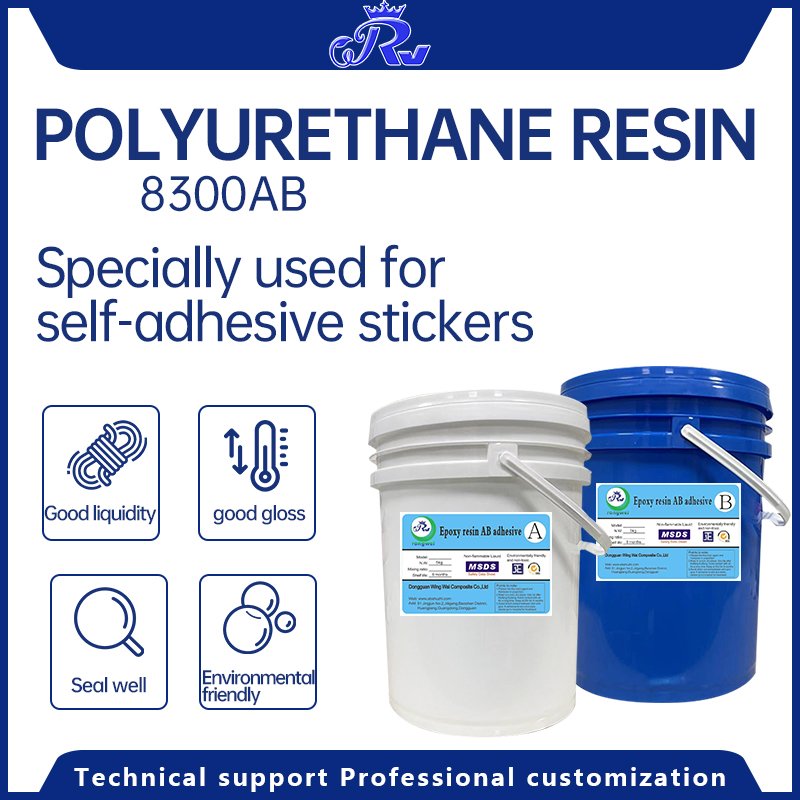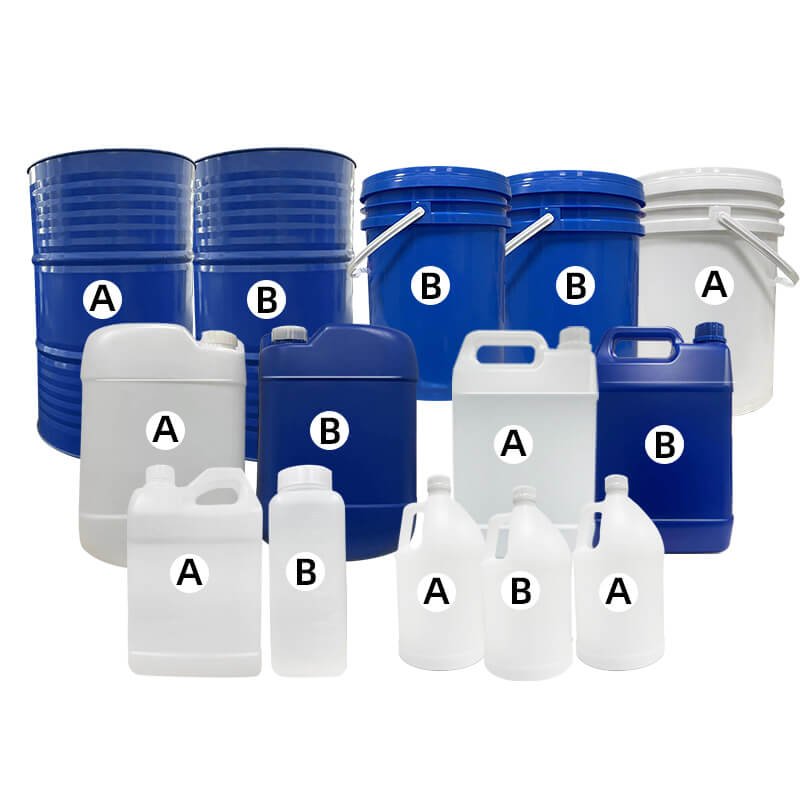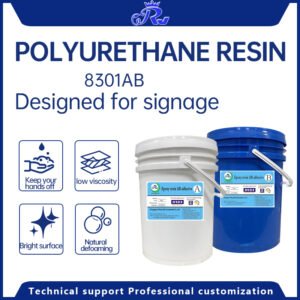- Home
- Flexible Strip LEDs
- RW Epoxy Resin 8300AB Is Used For Wide Application Adhesive Stickers、Wall Stickers、Flexible LED Light Strip、Electronic Circuit Board Encapsulation
Single Product
RW Epoxy Resin 8300AB Is Used For Wide Application Adhesive Stickers、Wall Stickers、Flexible LED Light Strip、Electronic Circuit Board Encapsulation
【FREE SAMPLE】We can provide epoxy resin for free, ONLY bear shipping cost.
【CRYSTAL CLEAR】clear and transparent epoxy resin AB glue(5:1,4:1, 3:1, 2:1, 1:1 ) is innovative coatings,castings and moulding products.
【FAST CURING】1:1 epoxy resin: about 12 hours, 2:1 epoxy resin: about 24 hours,3:1 epoxy resin: about 48 hours.
STORAGE& PACKING
–Storage Method : Please store in a dry place.
–Shelf Life : 12 months at 8-28°C.
— Packing: 100ml, 200ml, 500ml, 1000ml, 2kg, 5kg, 25kg, 50kg,200kg, 1000kg, Also accept customized package.
DESCRIPTION

RW Epoxy Resin 8300AB
Click to download : Epoxy Resin 8300AB .PDF
Features Polyurethane 8300AB synthesis, the products produced have high quality flexibility and low temperature resistance, after curing the product is crystal clear, highly transparent, suitable for room temperature or heating curing.
Application Areas Polyurethane 8300AB can be widely used in self-adhesive stickers, wall stickers, soft tape LED, electronic circuit board package.
Main performance indicators
| Polyurethane 8300A | Curing agent 8300B | |
| Complexion | Colorless and transparent | Colorless and transparent |
Density (g/m³) | 1.06+0.05 | 0.98+0.05 |
| Viscosity (mPa·s) | 1000 cps | 500MAXCPS |
| Brookfield DV2TRV Testing Method | 25℃ | |
Mixing ratio (by weight) | 100:33 | |
(By volume) | 5: 1 | |
After mixing
Epoxy Resin + Curing Agent | |
| State | Fluid |
| Viscosity | 1000±50mPa.S |
| Brookfield DV2TRV Testing Method | 25℃ |
| Operating time (100 grams, 25°C) | 30±3min |
Brookfield DV2TRV testing method, with a maximum viscosity of 800 mPa·s. | |
| Product Usage | 280-350 g/m2 (depending on substrate) |
Curing Properties
| Initial cure | About 24 hours at room temperature |
| Final cure | 5 to 7 days at room temperature |
| Service temperature range | 10℃-70℃ |
Method of use
Working Environment
Please keep the glue container clean, and mix the A and B components strictly according to the weight ratio, weigh accurately, and stir well clockwise along the inner wall of the container, and then leave it to stand for 3-5 minutes before use.
Precautionary Note
According to the operating time and the amount of glue mixing to avoid waste. When the temperature is lower than 15 ℃, please preheat the A glue to 30 ℃ before glue mixing, easy to operate (low temperature A glue will thicken); after use must be sealed barrel lid, to avoid moisture absorption caused by the product scrap. When the relative humidity is greater than 85%, the surface of the cured material is easy to absorb the moisture in the air, forming a layer of white mist, so when the relative humidity is greater than 85%, it is not suitable for ambient curing, and it is recommended to use heating curing.
Test results
| Hardness | shoreD | 65 |
| Bending Strength | Kg/mm2 | 23 |
| Heat Distortion Temperature | ℃ | 80 |
| Water Absorption Rate | % | <0.15 |
| Compressive Strengths | Kg/mm2 | 13.4 |
Preservation
| Fear of freezing | Yes | |
| Moisture Sensitivity | Epoxy Resin | Curing Agent |
| No | Sensitiveness | |
| Recommended Storage Temperature | 15°C – 25°C (not lower than 10°C and not higher than 50°C) | |
| Validity Period | 12 months in original packaging | |
| Packages | Epoxy Resin | Curing Agent |
| 5kg/Pot | 5kg/Pot | |
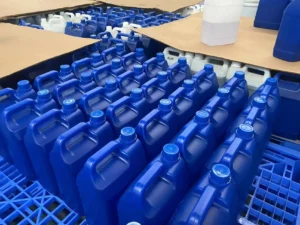
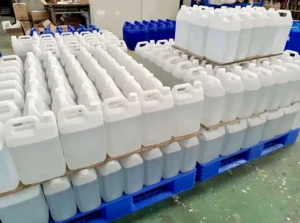
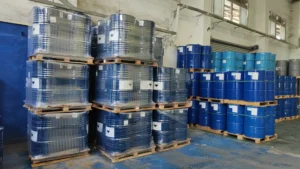
We provide innovative Product Solutions
ISO 9001:2015 certified prototype supplier to ensure that your project meets strict quality specifications.
One-to-one support service by a technical team, quick response within a few hours. Most competitive prices in the market, 30% lower than Europe and America.
Comprehensive capabilities include in-house machining and integration of manufacturing resources across China.
An experienced team of engineers and flexible production methods mean faster manufacturing and shorter lead times.
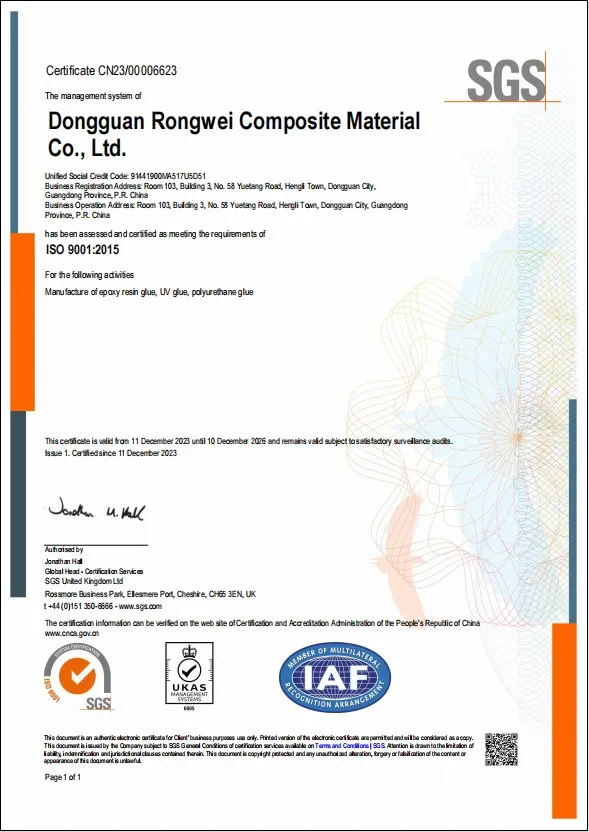
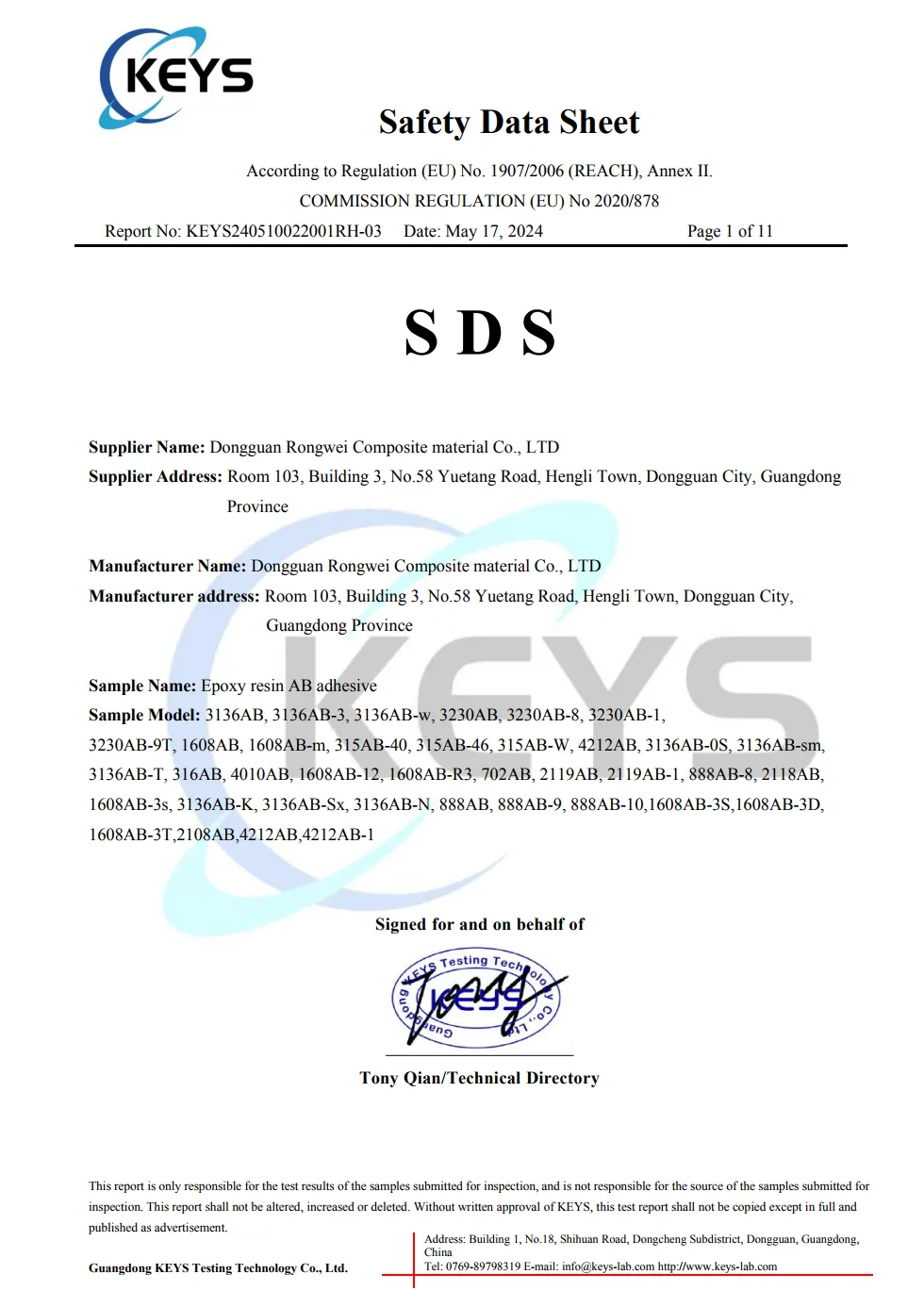
Frequently Asked Questions
All your questions about the Epoxy resin industry answered.
Are you a factory?
Yes, we are a research, development and production of epoxy resin factory.
What is uv resin and how is it different from epoxy resin?
UV resin is a material that cures quickly under ultraviolet light, is free of harmful substances, and is suitable for applications requiring rapid curing and transparent effects. The main differences between the two lie in curing methods, application scenarios, performance characteristics, operational requirements, and environmental friendliness.
What is epoxy resin?
Epoxy resin is a type of polymer made from materials like epichlorohydrin and bisphenol A. It has excellent adhesion, mechanical strength, and chemical resistance. It needs to be mixed with a curing agent to cure and is widely used in fields such as coatings, adhesives, composite materials, and electronic encapsulation.
Where are you?
Room 103, Building 3, No.58 Yuetang Road, Hengli Town, Dongguan, Guangdong, China.
What kind of products do you have?
Our main product line is epoxy AB glue, PU glue, and UV glue. We have over 100 stable and conventional products. Because the temperature and humidity in different countries are different and can greatly affect the performance of epoxy resin, we recommend that you contact us first and tell us your needs.
What is polyurethane resin and how is it different from epoxy resin?
Polyurethane resin is a high polymer material formed by the stepwise addition polymerization of polyisocyanates, macromolecular polyols, and chain extenders. Compared to epoxy resin, the main differences of polyurethane resin lie in its composition and curing process. Polyurethane resin is typically produced by the reaction of isocyanates and polyols, whereas epoxy resin is made from raw materials such as epichlorohydrin and bisphenol A.


